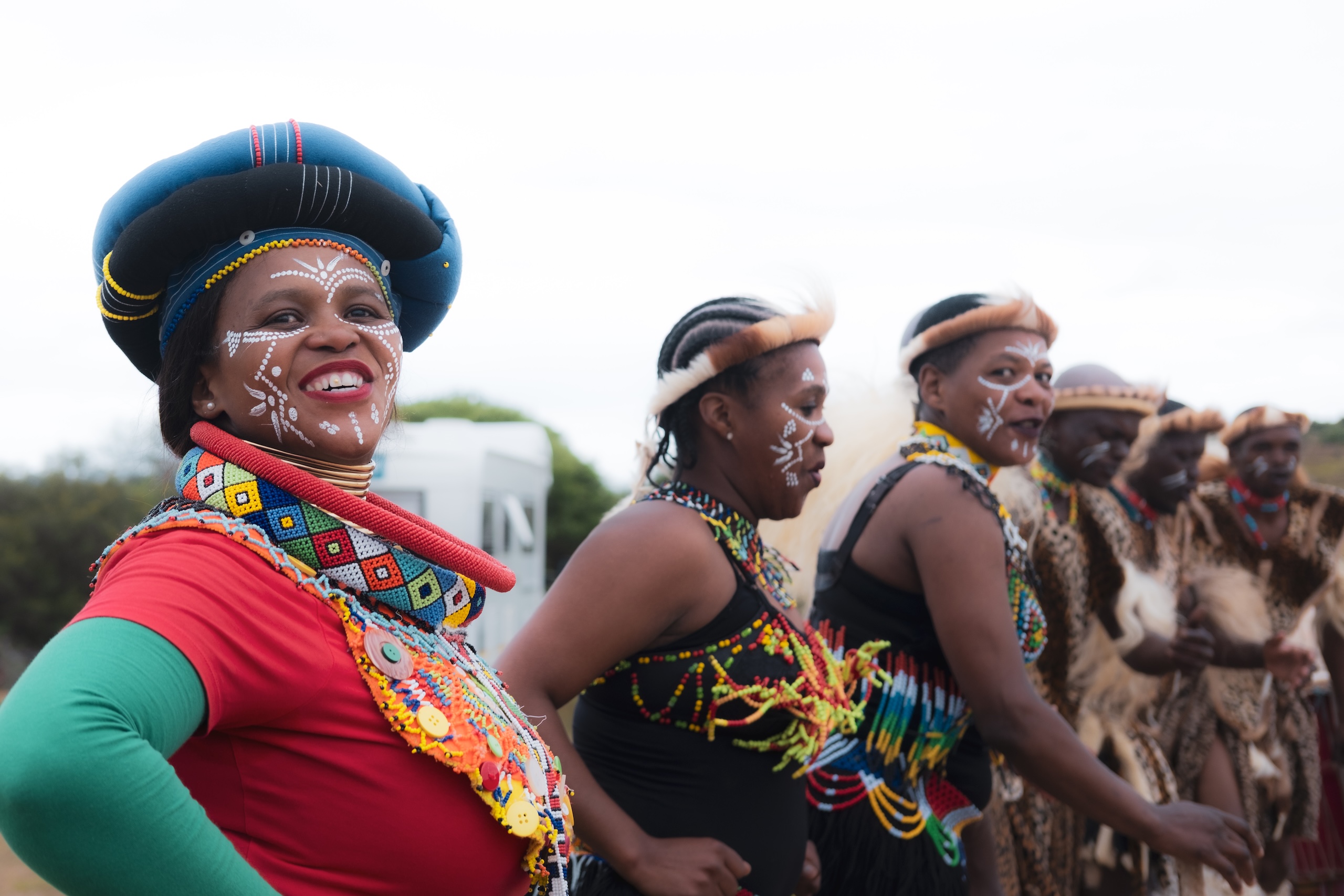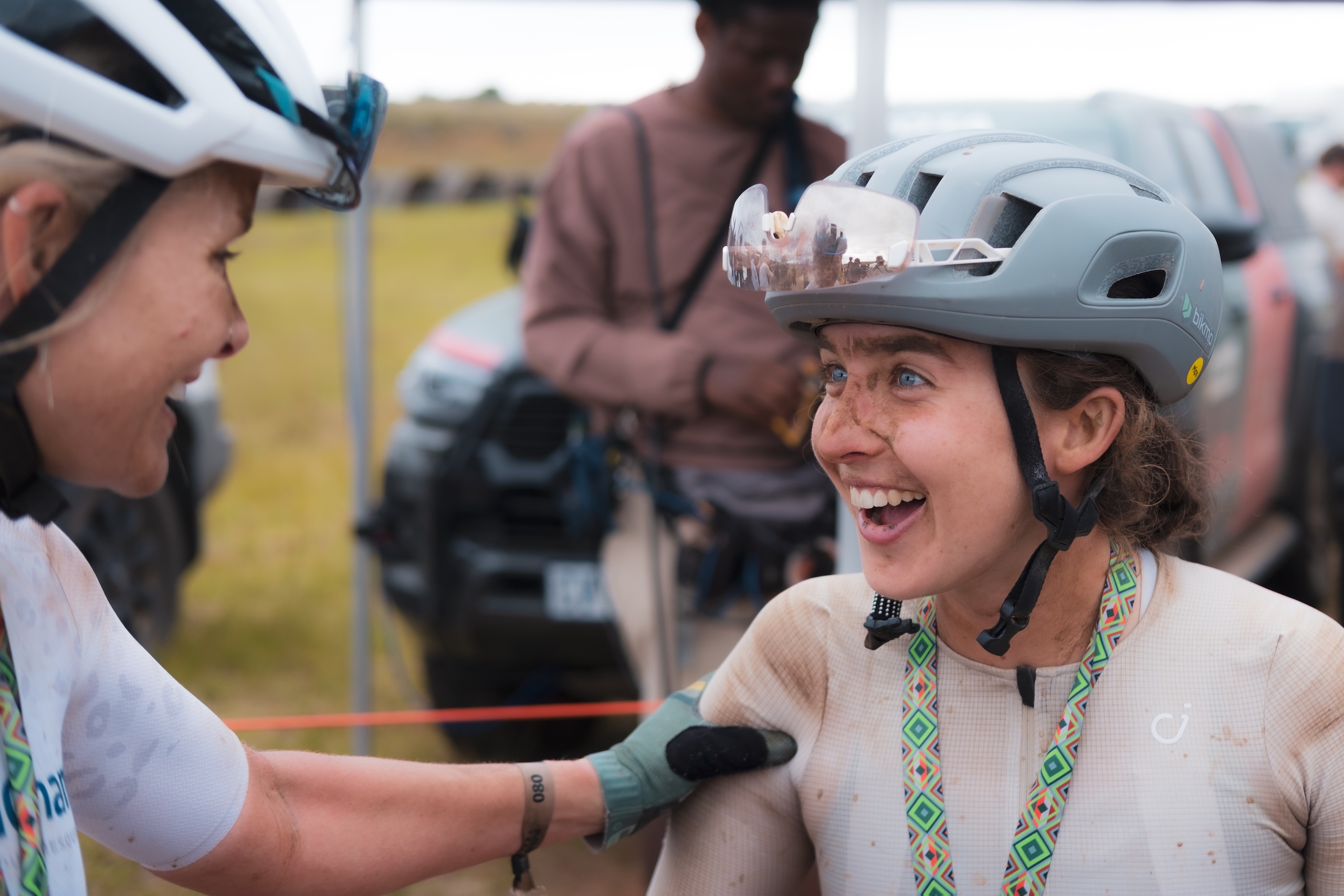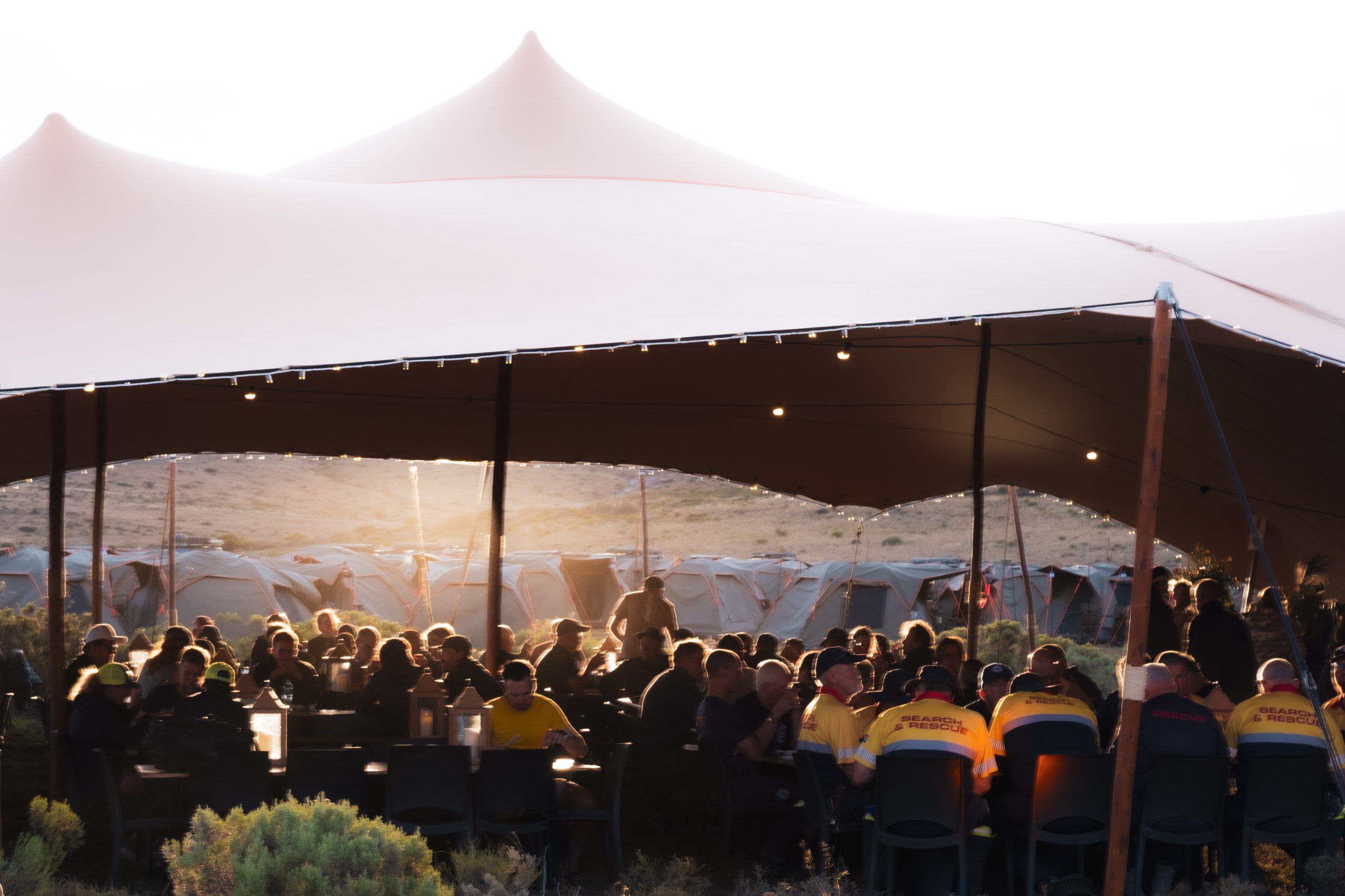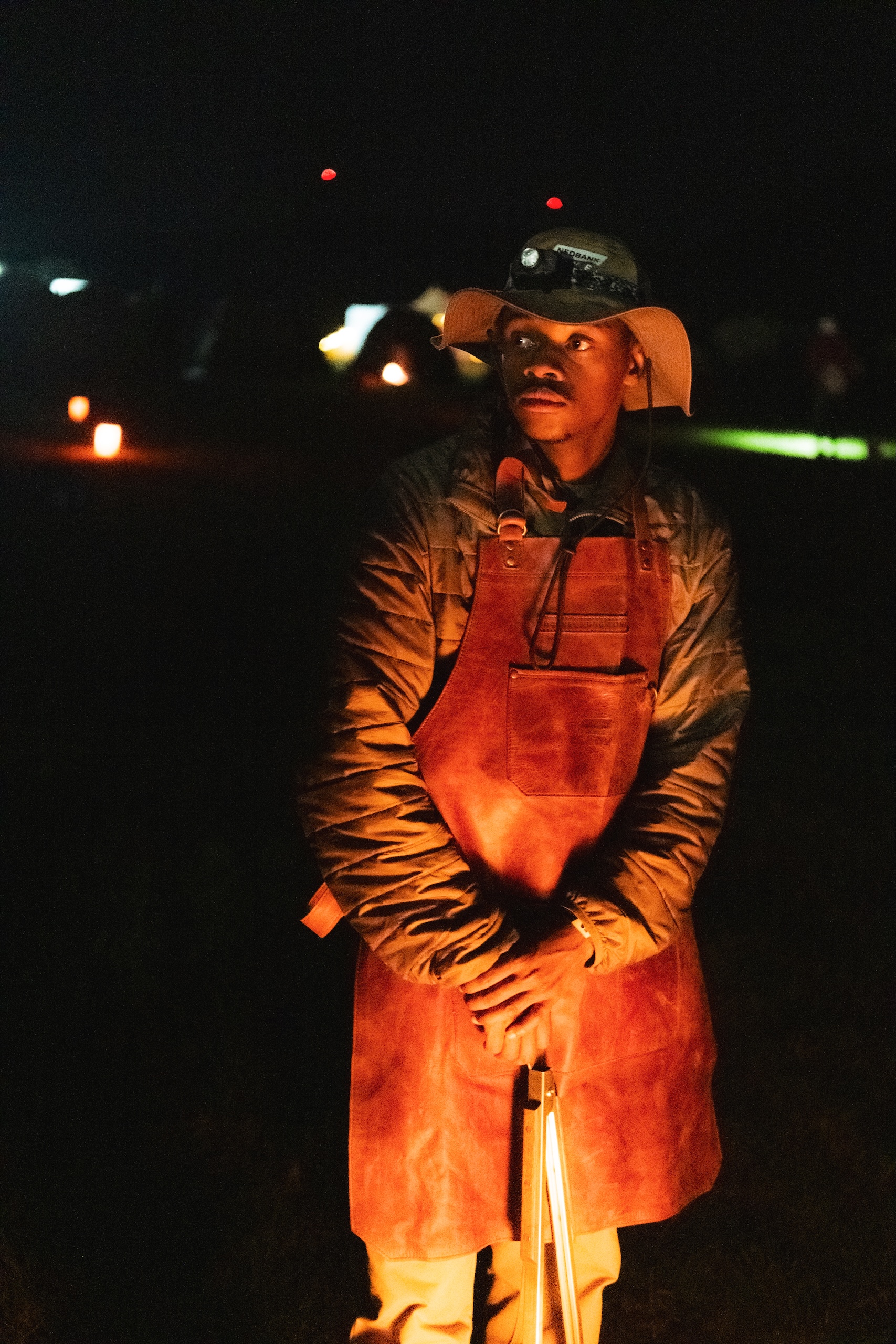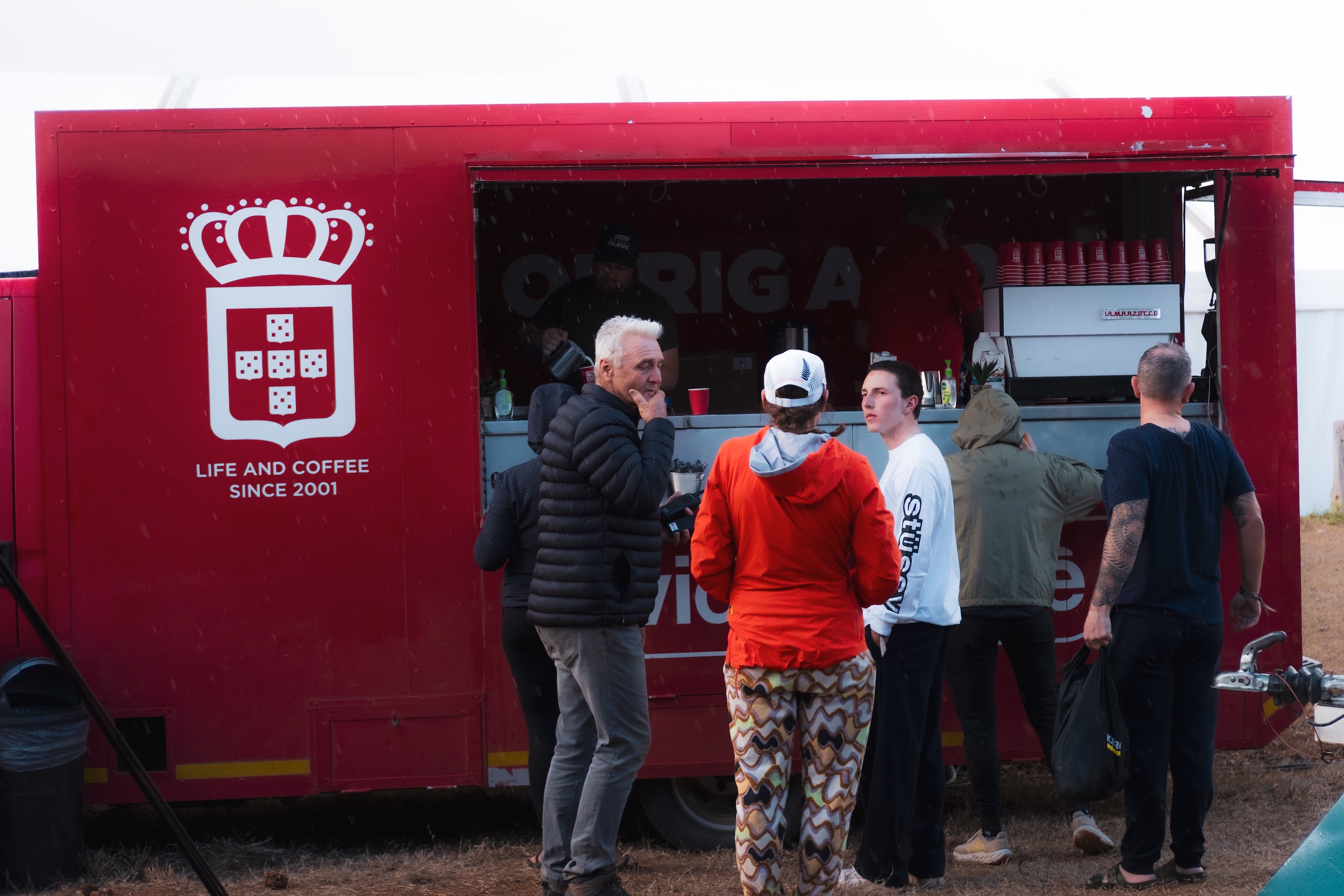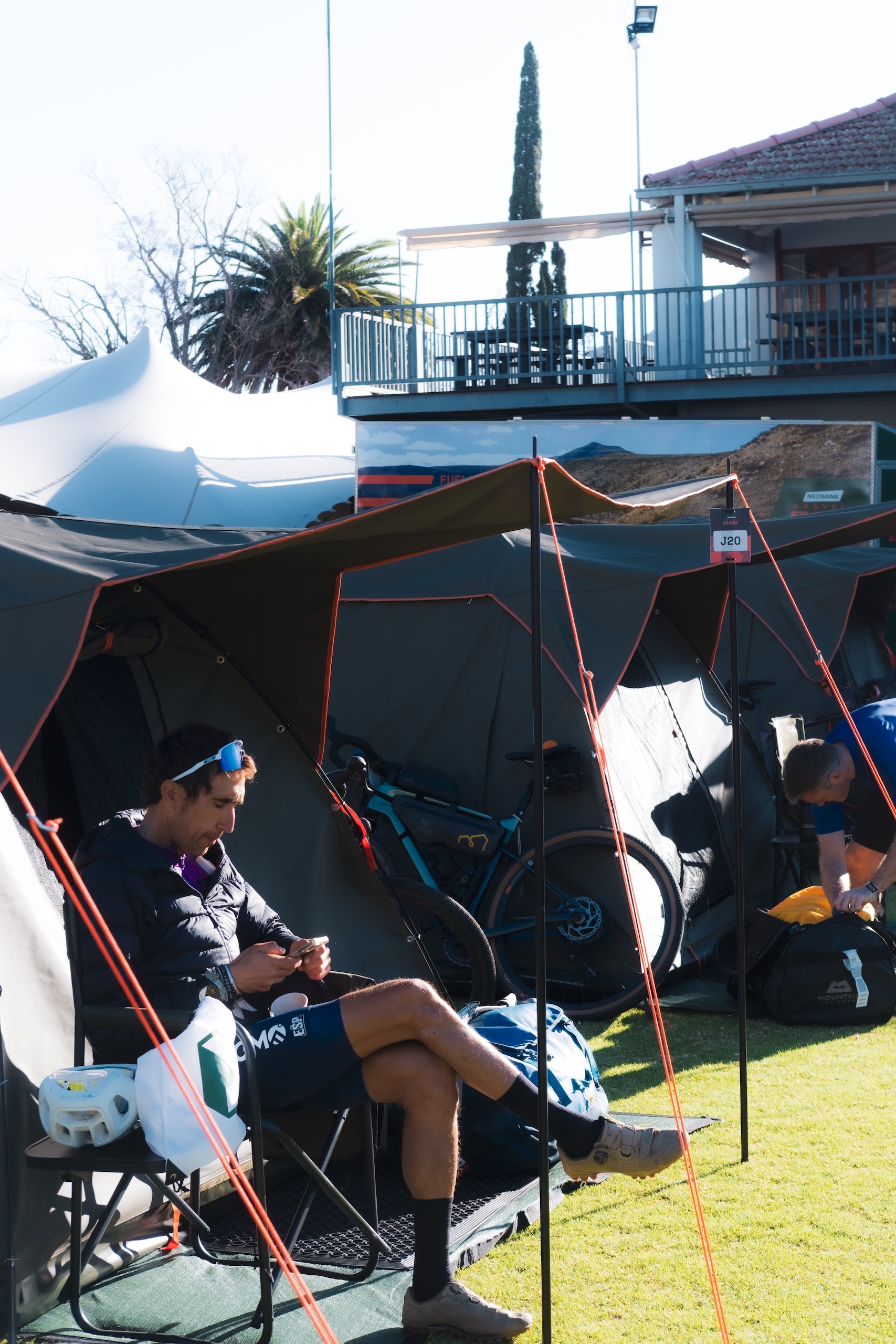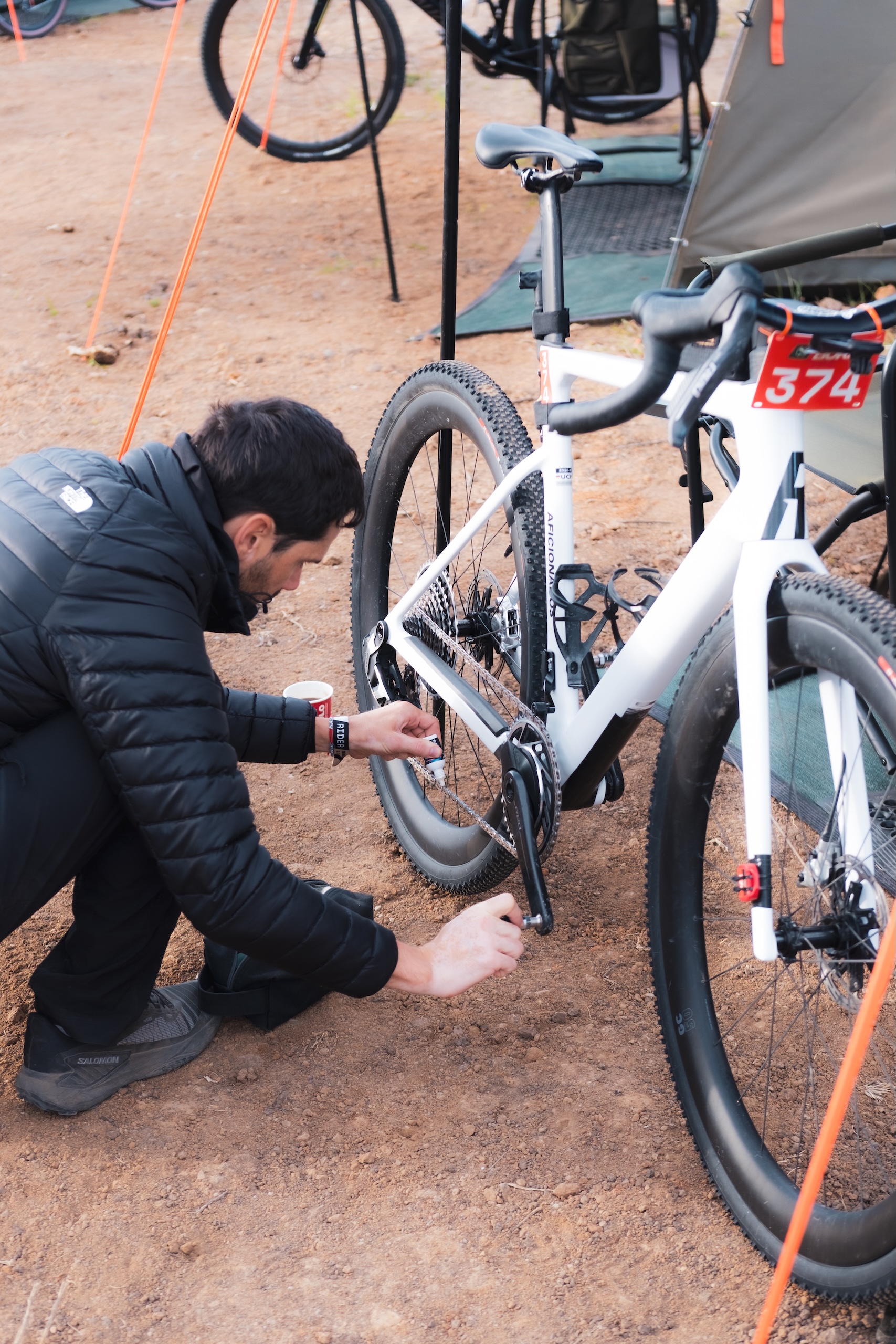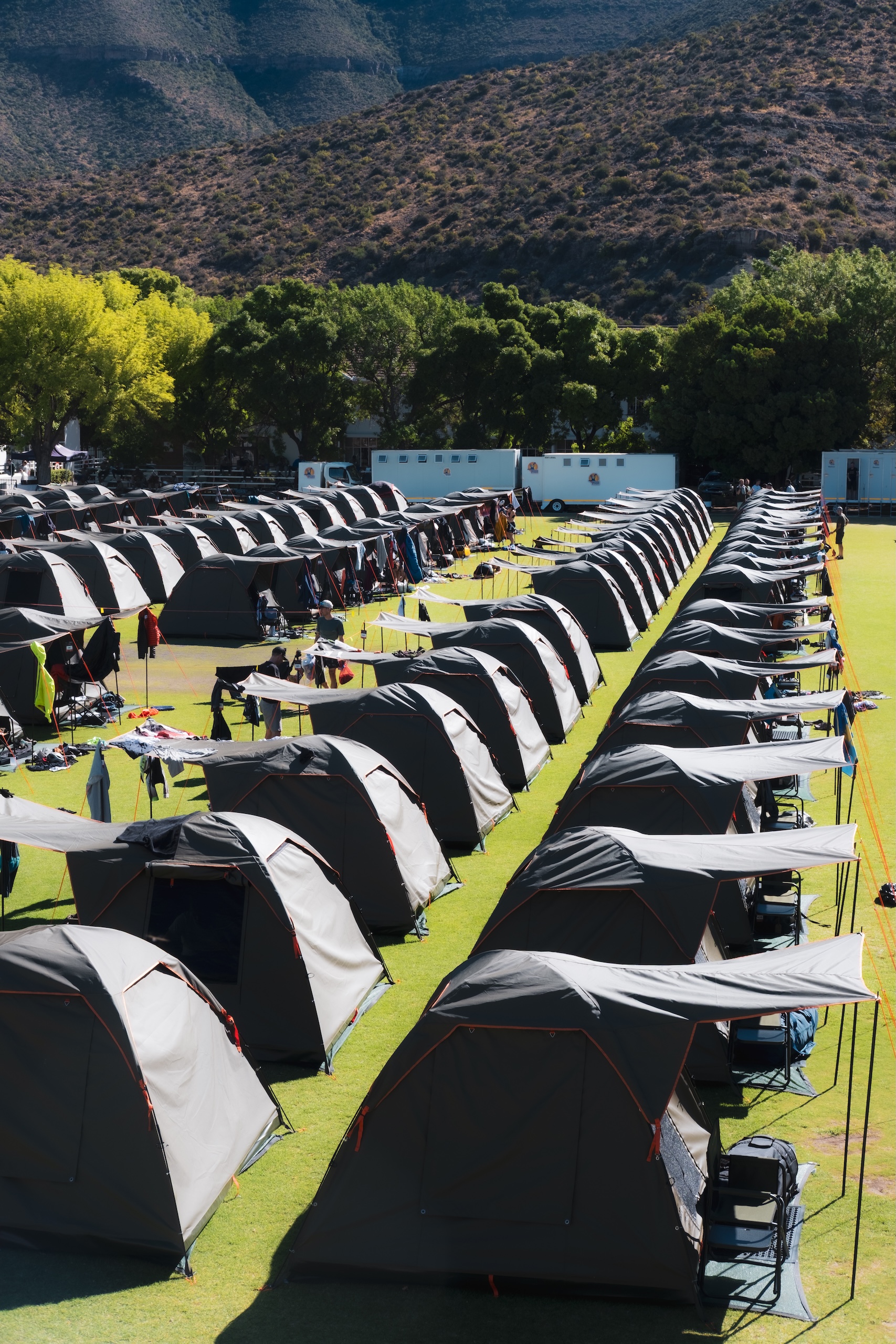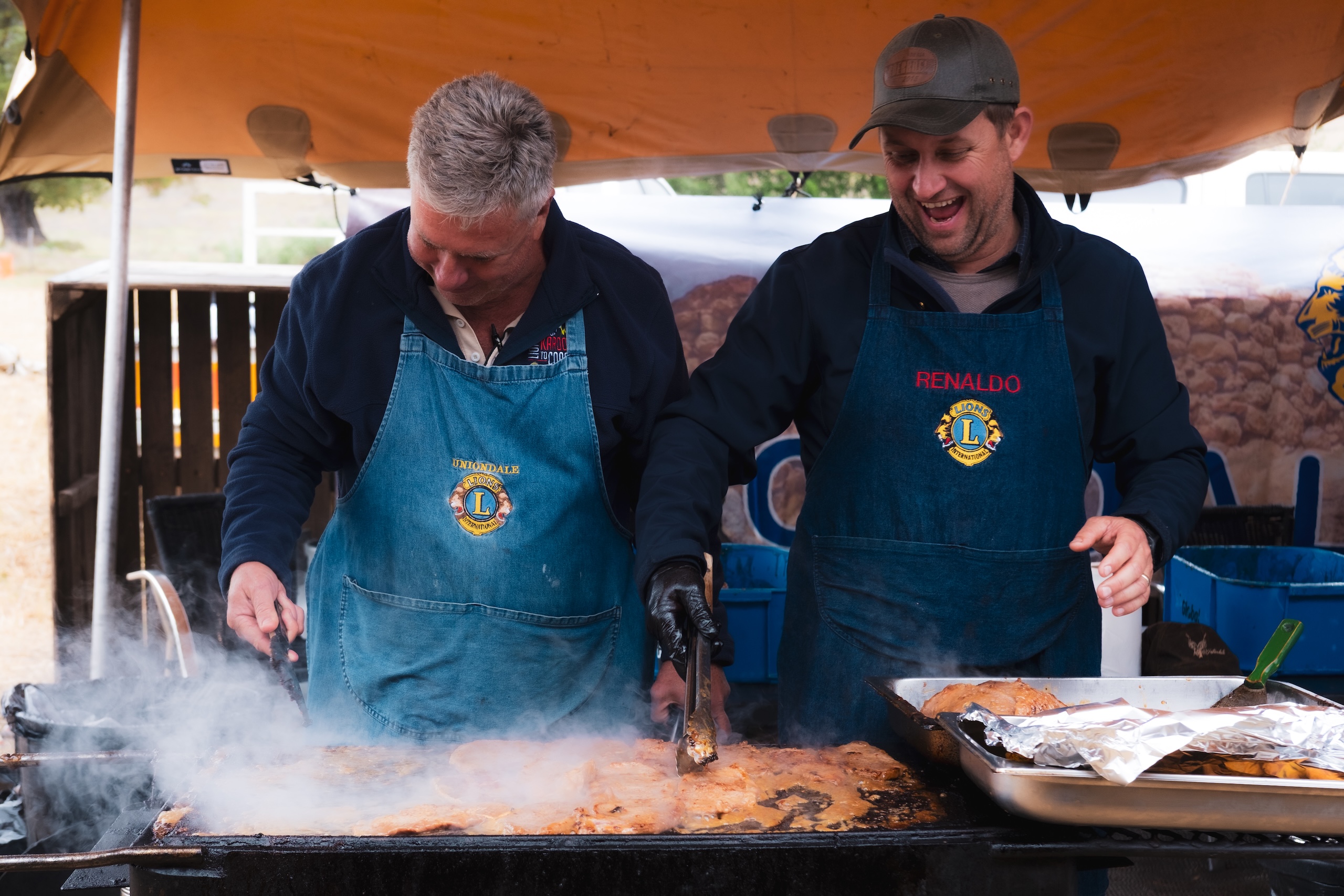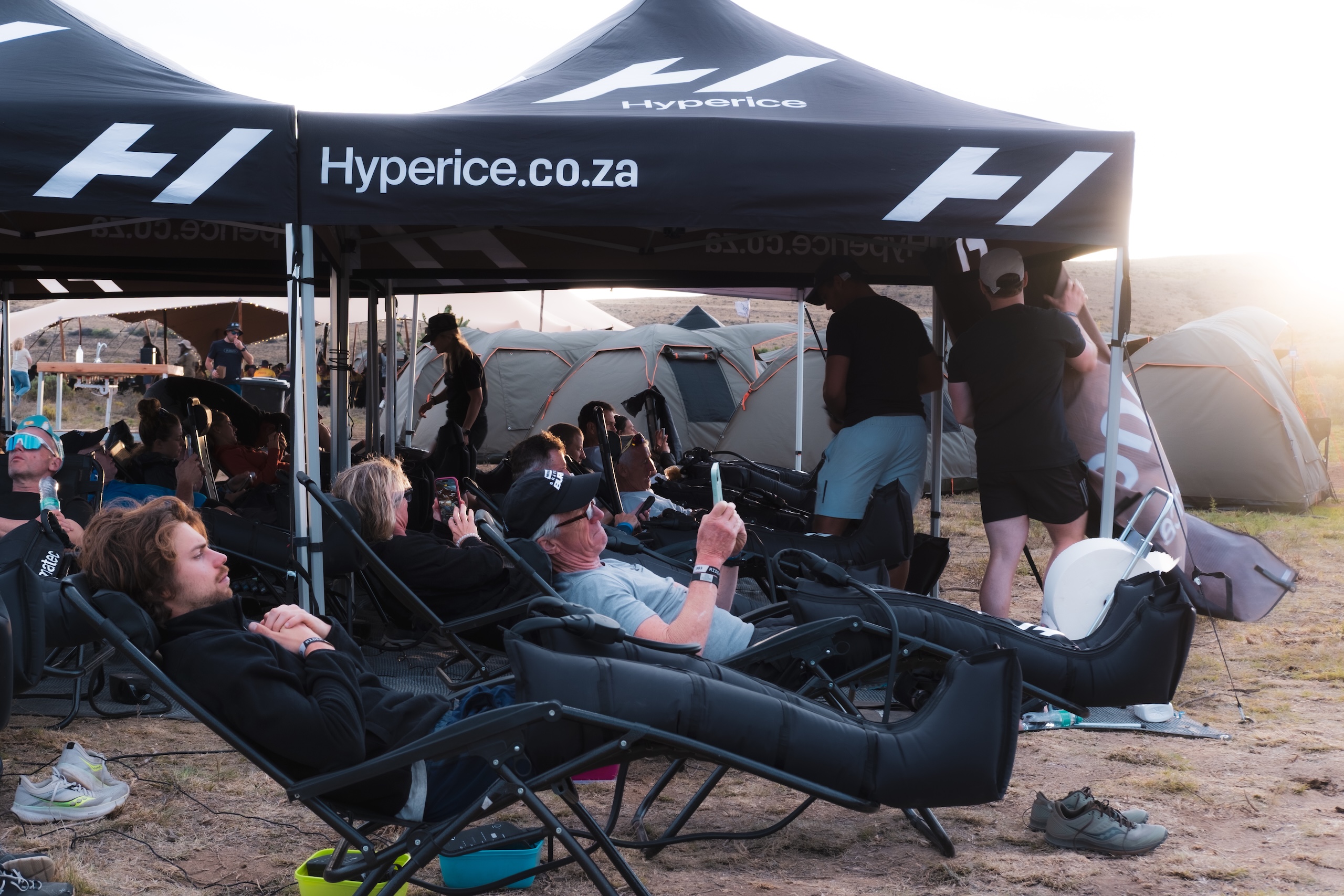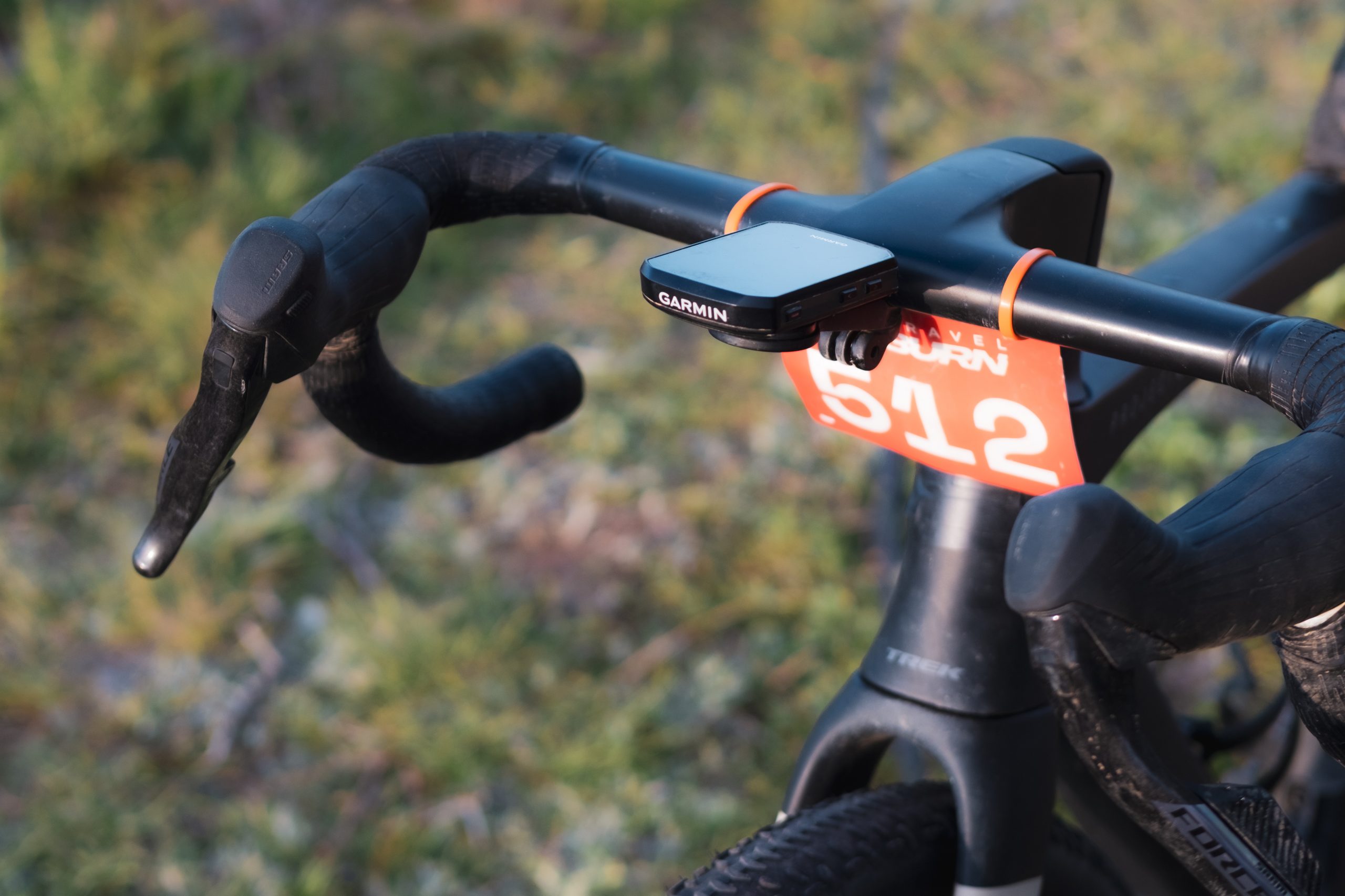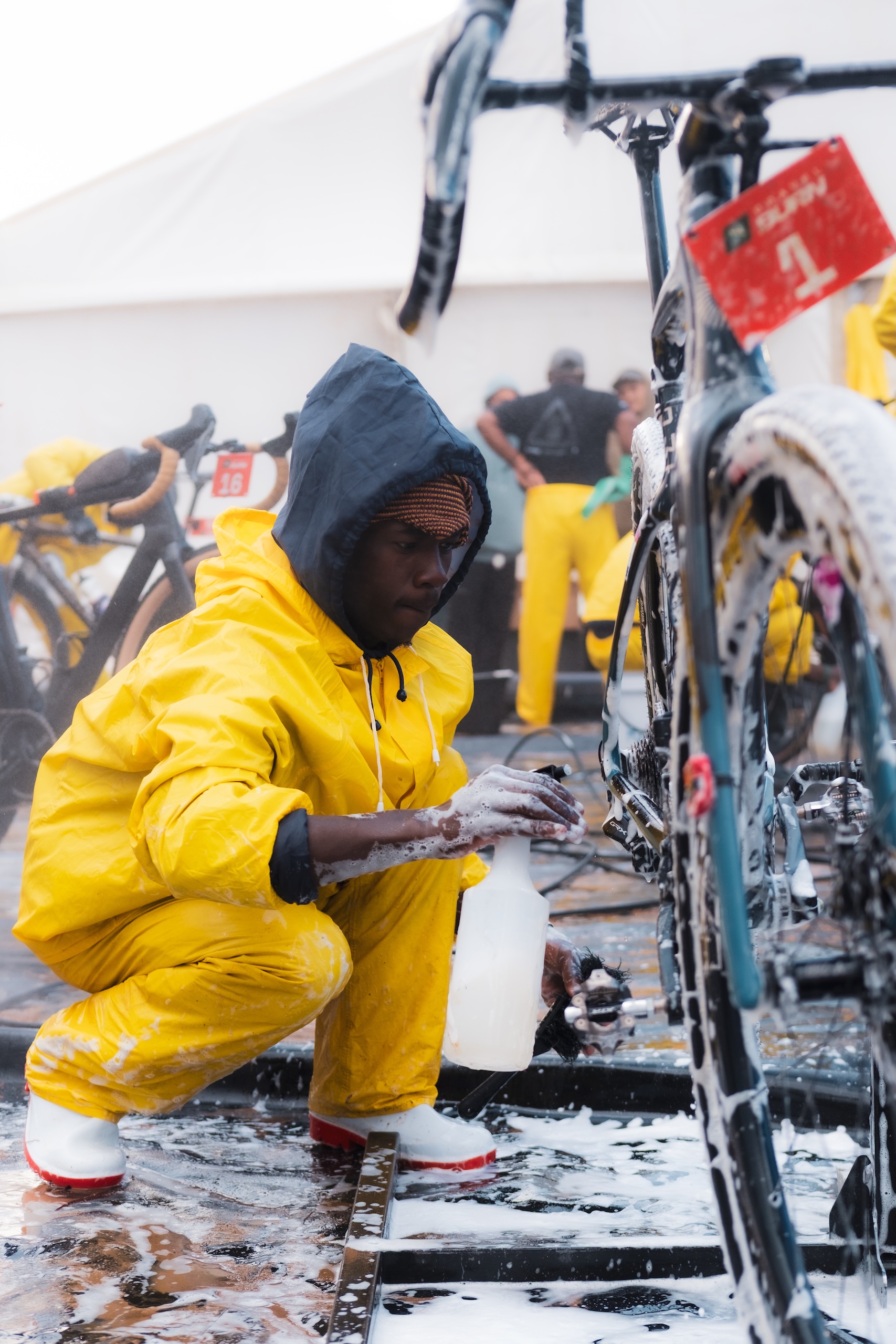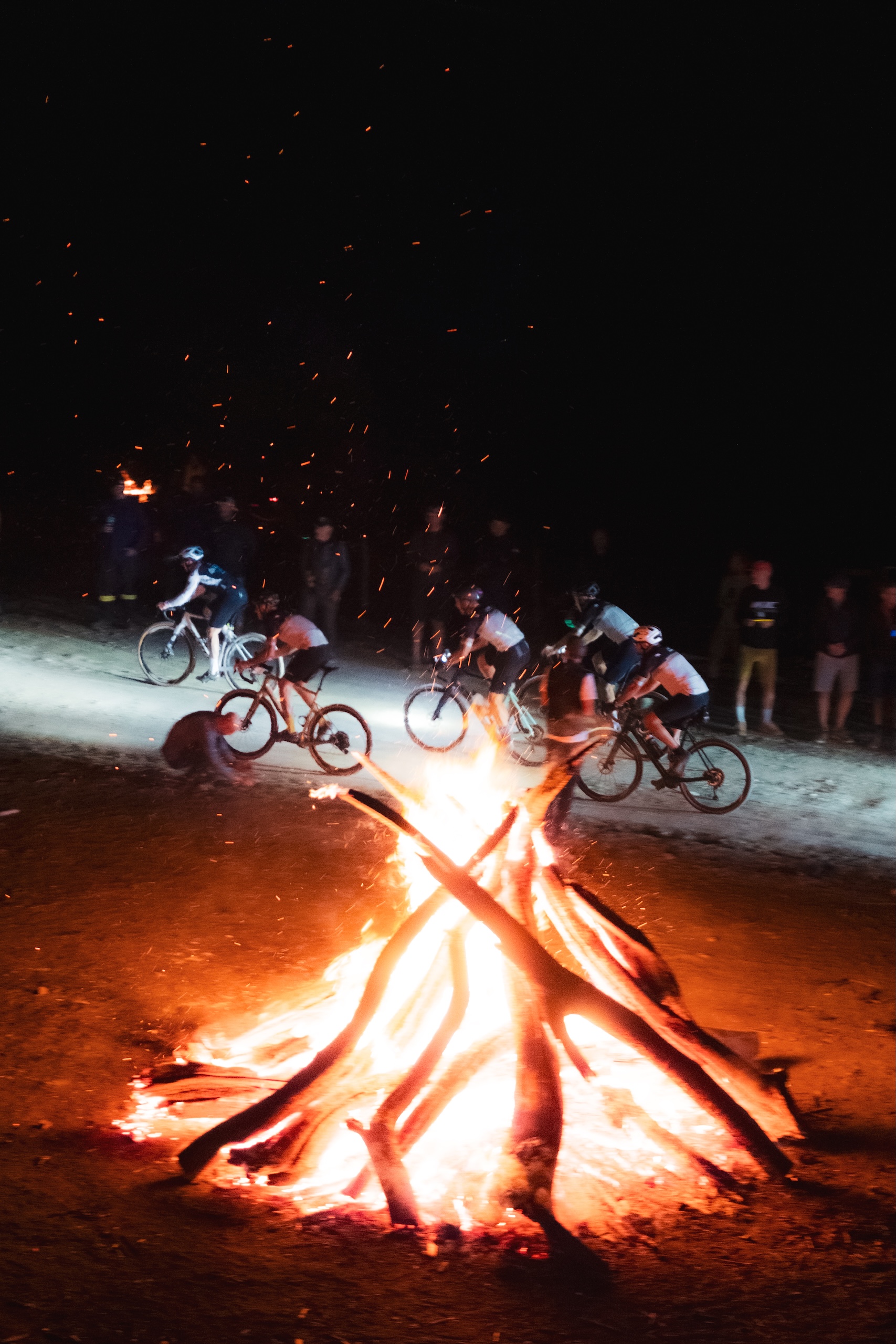The first edition of the Gravel Burn, held across the wild beauty of the Eastern Cape in South Africa, turned out to be an event where the time off the bike was as meaningful as the kilometers raced each morning. We were amongst the first 500 participants of what is set to be the go-to gravel stage race for the years to come, and realized that, in a multi-day event, the finish line also starts the countdown of the available time to accelerate recovery and preparation for the remainder of the stages.
A full-service camp
Nestled in the heart of South Africa’s vast landscapes, the Burn Camps were a masterclass in balance: premium comfort meeting raw adventure. Multiple Lapas, or groups of 25 tents, were arranged with a bonfire in the middle, which our Camp Master, Adrien, took care of. Inside each tent there was a raised Disc-O-Bed, a light that we could also use to charge our devices, and a side table. Spacious enough to stay upright and store our bike and the big bag we brought with us for the race, which was placed there by the time we arrived.
To wash off the day’s dust, we headed to the closest purpose-built showers. This infrastructure, far from precarious, will stay in place and serve the host farms beyond race week.
Daily routine
Each day began with the cool stillness of dawn, people getting their first dose of caffeine, and others queuing for breakfast. Arriving relatively late could mean no oats, which was the most demanded food at the camp. All that happened before 6 AM, the time when a man playing bagpipes woke up the remainder of the camp inhabitants. The other song we will all remember is “Firestarter” by The Prodigy, which was played just before the sound of the horn marked the start of the stage.
After tackling the undulating terrain and varied hurdles along the Karoo semi-desert, most riders arrived at the next camp by 1 PM, which on paper is plenty of time to recover and prepare for the following day. That is why we asked some elite riders and age groupers about how they spent their afternoons.
Different priorities
Simon Pellaud finished in second position, a remarkable achievement taking into account that, unlike most pro riders, he didn’t count on a mechanic and slept in a tent rather than a motorhome. “The first thing I do is to drink a lot of fluids, because here you dehydrate very easily. After the recovery meal, I go to either massage or to make sure my bike is ready for the following stage,” said the 2025 Life Time Grand Prix runner-up.
Our neighbor at the camp, Jorge Padrones from Radio Gravel, is experienced in multi-day events, but acknowledges the stress of trying to optimize recovery while having one eye already set on the next day. “It may look like a lot of free time, but one must take a shower, handwash their clothes, eat, edit the generated content, pin the number in the jersey of choice for the next stage, and so forth. Simple tasks that, when concatenated, take a lot of your valuable recovery time,” explained Jorge.
Socialize with fellow participants or stay in bed? That is the dilemma a lot of us faced daily. The choice of Maddy Nutt seems quite clear. “I spend my afternoons eating more than relaxing and also trying to hang out as much as possible,” she said while finishing her bag of popcorn. Maddy has achieved impressive results in comparable races following that approach, proof that one may not need to focus excessively on recovery.
“The thing I look forward to the most is the massage. I got my massages booked at 1 PM, so I have to make sure I finish on time. Later in the day you will find me in the Finish Line Boma with a beer in hand,” said Wade Wallace from Escape Collective, actually with a beer in hand. On multiple days, at 5:30 PM, he hosted a panel session with relevant riders, the perfect entertainment between the podium ceremony and dinner time.
Monitor and anticipate
By mid-afternoon, the camps turned into small communities. The finish line tent, or Boma in local language, accommodated early finishers already in casual clothes, riders that had just arrived from their daily push, and others searching for either social interactions or mobile connection. Nearby there was the Hyperice Recovery Zone, where those believing in the magic power of compression boots enjoyed a 30-minute session.
What we really believed in was the importance of monitoring the workload of each stage and analyzing the profile we had to tackle the following day. That is why the Garmin products we tested during the Gravel Burn proved to be extremely useful in a multiple-day race. The first couple of stages helped us optimize the data screens of the Edge 550, adding more power and heart rate-related fields to see in-race how our body was coping with fatigue. The power records recorded by the Rally XC210 pedals on the initial stage, when we were still fresh, became impossible to repeat later in the week.
From time to time, we also passed by the bike stall to check if our bike, which we handed to the mechanics, was already washed and, if needed, repaired. You may have already heard about the downpour we faced on stage 1, so imagine the quantity of brake pads that had to be replaced overnight by the group of hard-working people.
The Night Burn
The evening after stage 3 was the outlier, with a nocturne criterium that delighted everyone at the camp. On the previous day, riders took on the Red Bull KM, and those who recorded the biggest difference between their GC placing and sprint position qualified for the aforementioned race. Riders set off in intervals, based on a handicap system that gave the underdogs a head start versus Tom Pidcock, who had to catch each one of them. The last to be caught won, and those spectating enjoyed a short but intense additional dose of racing under the light of the fires.
Early to bed, early to shred
As the sun dipped low, the Burn Camp transformed once more. Long communal tables filled with food and laughter. Dinner was from 6 PM, and even if we had been indulging ourselves with the varied number of free-to-take snacks, our metabolism was always ready for the tasty buffet offered.
The fatigue of the day softened into reflection, and the line between competitors blurred completely. Top placed riders hanging out with people who that day had spent double their time on the saddle. Recovery tips mixed with plans for the next stage, and after a short digestion, we were already wrapped inside our sleeping bag.
The Gravel Burn proved that a complete adventure is as much about the off time as it is about the effort, and that the quiet hours spent in good company, are what make multiple-day events truly special. In its first edition, the Gravel Burn offered more than a test of endurance. It offered a space to slow down, disconnect from daily commitments, and appreciate the rare blend of simplicity and comfort that defines the magic of riding off the beaten path.



